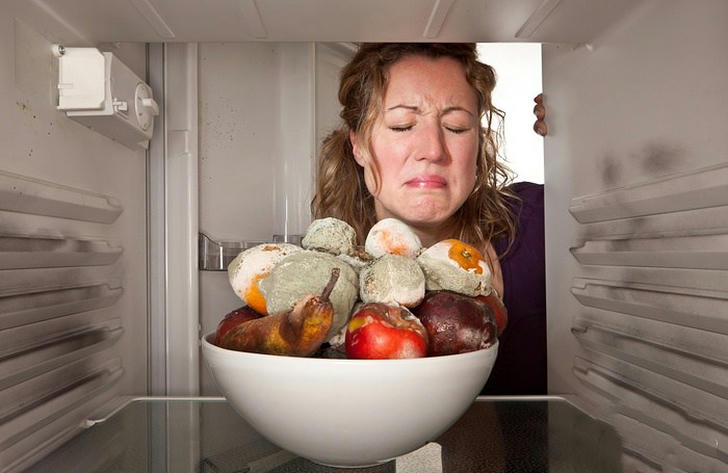Refrigeration ≠ Freshness? These Foods Spoil Faster in the Fridge!
Stashing groceries in the fridge is a reflex for many. After all, cold equals fresh—right? Not always. While your refrigerator is designed to preserve most perishable items, some foods actually degrade faster when stored in chilly, humid environments. That’s right—your fridge might be accelerating the spoilage process for certain pantry staples.
Let’s dive into which foods are better left out, why refrigeration can backfire, and what you should do instead.
1⃣ Tomatoes: Say Goodbye to Juicy Flavor
Refrigeration damages tomatoes on a cellular level. Cold air breaks down their delicate membranes, leading to a mealy texture and muted flavor.
The science: A study from the University of Florida found that storing tomatoes below 55°F (13°C) significantly reduces their flavor compounds.
What to do instead: Keep tomatoes on the counter, out of direct sunlight. For very ripe tomatoes, eat within a couple of days.
2⃣ Potatoes: Cold = Starch Disaster
When raw potatoes are stored in the fridge, their starches begin converting into sugars. Not only does this affect taste and texture, but it may also form harmful compounds when cooked at high temperatures.
Bonus fact: The UK’s Food Standards Agency warns that chilling potatoes may increase acrylamide levels—a potential carcinogen—when fried or roasted.
What to do instead: Store them in a cool (but not cold), dark place, like a pantry or a paper bag.
3⃣ Bread: Dry and Stale, Fast
If you’ve ever pulled out a cold, crumbly slice of bread from the fridge, you’re not imagining things. Refrigeration accelerates retrogradation, the process where starch molecules crystallize, causing bread to go stale faster than at room temperature.
What to do instead: Eat within a few days at room temp, or freeze if you need longer storage. Freezing actually preserves bread better than refrigerating.
4⃣ Onions: Mold and Mushy Layers
Whole onions require ventilation. When stored in the humid environment of a fridge, they absorb moisture and develop soft spots, sometimes even mold.
Did you know? Cut onions can be refrigerated in sealed containers—but whole ones fare better in open air.
What to do instead: Keep them in a mesh bag or open basket in a cool, dry spot.
5⃣ Garlic: Sprouting & Softening
Refrigerated garlic is more likely to sprout, and once it does, the cloves become rubbery and bitter.
What to do instead: Store garlic bulbs in a breathable container on the countertop. Avoid plastic bags—they trap moisture and speed decay.
6⃣ Bananas: Premature Browning
Cold temperatures interfere with bananas’ ripening process, causing the skin to turn dark prematurely while the inside remains underripe.
What to do instead: Let them ripen on the counter. If they over-ripen, use them for smoothies, banana bread, or freeze for later.
7⃣ Coffee Beans: Damp, Dull, and Disappointing
Coffee beans absorb odors and moisture. Sticking them in the fridge can lead to a flavorless brew and a soggy grind.
What to do instead: Store coffee in an airtight container in a cool, dark place—like a cabinet. If you must store long term, freezing in small batches works better than refrigeration.

So, Why Does This Happen?
Your fridge is cold and humid by design—ideal for most perishables like dairy, meats, and leafy greens. But for foods with low moisture content or complex cellular structures (like tomatoes or bread), that environment speeds degradation.
Humidity, condensation, and temperature shock are the main culprits behind the faster spoilage of these foods.
Quick Recap: What NOT to Refrigerate
| Food | Don’t Refrigerate Because… | Store Instead... |
|---|---|---|
| Tomatoes | Lose flavor and texture | Counter, away from sun |
| Potatoes | Sugar conversion and acrylamide risk | Cool, dark place |
| Bread | Stales faster | Room temp or freeze |
| Onions | Mold and moisture issues | Open-air basket |
| Garlic | Sprouts, softens | Dry, ventilated spot |
| Bananas | Skins brown prematurely | Countertop |
| Coffee Beans | Absorb odors, go stale | Airtight, room temp jar |
Bottom Line: Rethink Your Refrigerator Habits
Not everything thrives in the cold. While the fridge is great for milk, leftovers, and eggs, it’s not a universal preservation tool. Knowing which foods prefer room temperature will help reduce food waste, preserve flavor, and keep your kitchen running efficiently.
Next time you unpack groceries, give your onions, bananas, and tomatoes a second thought. Your taste buds—and your wallet—will thank you.
